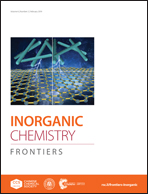Three-dimensional iron oxyfluoride/N-doped carbon hybrid nanocomposites as high-performance cathodes for rechargeable Li-ion batteries†
Abstract
Developing low-cost high-performance cathode materials for Li-ion batteries is highly desirable. FeOF is considered to be one of the most promising candidate cathode materials for high-performance Li-ion batteries, because of its high capacity and relatively high working potential. Herein, three-dimensional (3D) iron oxyfluoride/N-doped carbon (FeOF/NC) hybrid nanocomposites have been successfully fabricated through a facile solvothermal method combined with a wet ball-milling approach. The uniqueness of this study is that the prepared nanocomposites retain 3D hierarchical structures after wet ball-milling and the materials are doped with nitrogen. The results demonstrate that FeOF nanoparticles are well-dispersed in the 3D interconnected porous NC matrix with a nitrogen doping content of 1.23 at%, where the NC not only provides a strong conductive network facilitating electron and ion transfer, but also accommodates the volume variation during the repeated discharge/charge cycles, thus leading to superior electrochemical performance for the 3D FeOF/NC electrode. When evaluated as cathodes for LIBs at room temperature, 3D FeOF/NC nanocomposites deliver a high reversible capacity of 316 mA h g−1 at 0.05 A g−1 in the voltage range of 1.5–4.0 V, as well as a robust rate performance obtaining 184 mA h g−1 at 2 A g−1. Furthermore, a stable capacity of 191 mA h g−1 can still be retained even at 1 A g−1 after 300 cycles.



 Please wait while we load your content...
Please wait while we load your content...